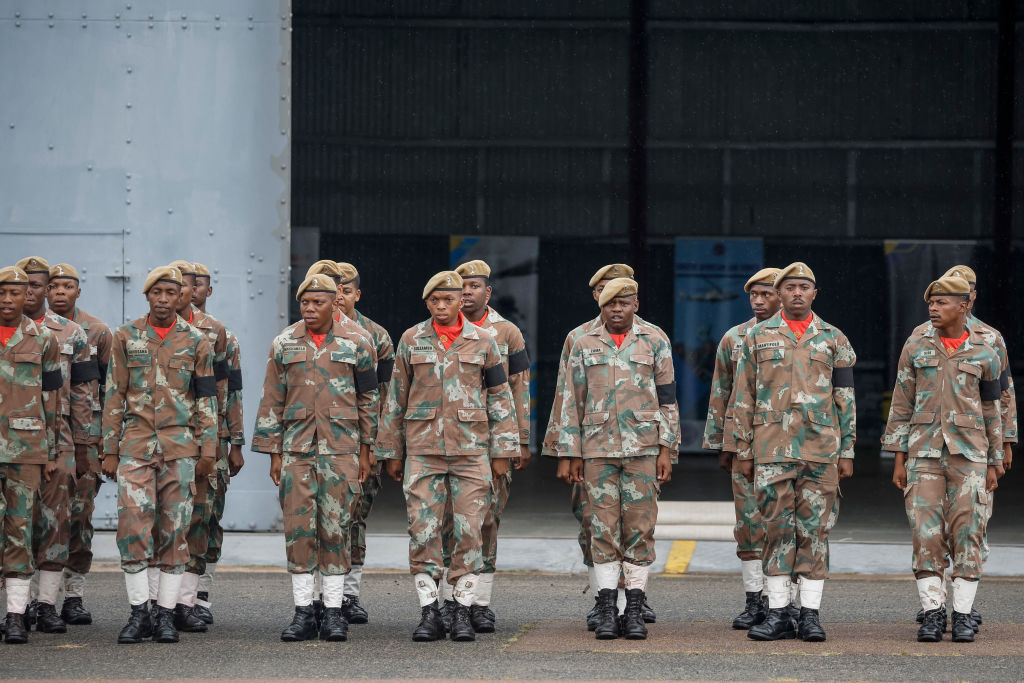The South African National Defense Force faces a R41.2 billion (more than $2.3 million) budgetary shortfall that limits every operational, technological and human resource decision its leaders make.
According to Angie Motshekga, South Africa’s minister of defense and military veterans, better funding could have allowed the defense force, also known as SANDF, to handle alone the recent repatriation of troops who were deployed to the eastern Democratic Republic of Congo as part of the Southern African Development Community Mission in the DRC. The United Nations assisted in the repatriation. South African Soldiers accounted for 14 of the 20 mission Soldiers killed in clashes with M23 rebels.
“The current situation is much more dire now that we are not even getting what we had hoped to get as the department of defense, while we have a huge responsibility of defending the country, defending ourselves,” Motshekga said in local media reports.
South Africa’s Department of Defense confirmed to Parliament in June that its estimated baseline requirement of R98.3 billion (more than $5.5 billion) exceeds the allocated R57.2 billion (more than $3.2 million) for the 2025-26 Medium-Term Expenditure Framework, defenceWeb reported. The framework is a three-year rolling spending plan that outlines the department’s allocations and spending priorities.
The defense department has reworked its plans to focus on border security, maintaining a rapid reaction capability for regional obligations with limited force deployment for internal disaster and conflict response.
Large-scale force rejuvenation, comprehensive prime mission equipment modernization and sustained global military cooperation have been dropped, or indefinitely deferred, defenceWeb reported. At the meeting in June, a member of Parliament warned that continued underinvestment in defense also risks eroding South Africa’s diplomatic and strategic credibility in a region beleaguered by transnational crime and foreign military influence.
South Africa’s armed forces have faced budget woes for years. International benchmarks suggest that countries allocate at least 2% of their Gross Domestic Product to defense spending to maintain adequate security capacities. South Africa consistently falls below 1% of GDP. This underscores budget limitations and a lack of prioritization in strengthening national security, according to Good Governance Africa.
Among other things, the shrinking budget has resulted in South Africa’s failure to replenish its high-tech forces, including the Navy, Special Forces and Air Force, according to retired Brig. Gen. Peter Sereko, an operational expert with experience in South African armed forces missions.
“In a domestic context, the government is also increasingly expecting the SANDF to render support to SAPS [South African Police Service] and to play an active role in supporting them,” Sereko told South Africa’s News24. “There is a mismatch between the political masters’ expectation and SANDF obligation as mandated by the Constitution. We have seen now, currently with how widespread illegal mining in the country has become, there is very little the military can do to assist because of budget constraints.”
Motshekga fielded budget-related questions in early July at the National Council of Provinces. She painted a bleak picture regarding challenges facing the South African Air Force.
“We are bleeding, but we are not finished,” she said in a report by South Africa’s Independent Online news website. “We still have capabilities. That’s why we’re even able to go and fly into the flooded areas, take in helicopters.”
During the council meeting, Motshekga acknowledged that the SANDF is “not at the optimum level that we need to be,” but said the force is still operational and responsive.
“We really have challenges, but we’re not necessarily completely dysfunctional,” she said in the Independent Online report. “We are working very hard to stay afloat, stay in the air, and continue to confront our challenges.”
Deputy Defense Minister Bantu Holomisa said in January that signs of budgetary struggles and a taxed armed forces have been apparent for up to 15 years.
“The defunding of the SANDF led us to say [about] the state of readiness of our defense force that we cannot guarantee we are ready, because as you are aware we are struggling to even maintain the aircraft, such as the helicopters, which normally give aerial cover to our troops when they are under attack,” Holomisa said in a report by South Africa’s BusinessLIVE news website.
Critics have argued that South Africa’s government has shown little political will to address the SANDF’s financial challenges.
According to Theo Neethling, a professor in the Department of Political Studies and Governance at the University of the Free State, growing financial pressures and severe socioeconomic challenges leave the government in a weak position to significantly increase the defense budget.
“Perhaps now is the time to reassess both [SANDF’s] mandate and funding, particularly in light of the persistent gap between political expectations and available resources,” Neethling wrote on the university’s website.

